#RescuePh
Explore tagged Tumblr posts
Text
Social Media: A Lifeline in Times of Calamity
There was a time when the only way to find out what was happening during a disaster was through TV, radio, or print. Back then, information was slow, one-way, and sometimes outdated by the time you got it. The government, families, and even social workers relied on these traditional outlets to stay informed. But today, social media has flipped the script, giving people a whole new way to get real-time information and, more importantly, to share it.
Let’s take a look at how things have changed.
Families: Connecting Amid Chaos
In the past, if a storm hit and phone lines went down, families would be left wondering for hours—sometimes days—about the safety of their loved ones. Social media wasn’t part of the picture. You waited for news broadcasts to mention affected areas or hoped a radio station would cover the part of the country where your relatives lived. In short: it was a waiting game, and that game was agonizing.
Today, however, social media platforms like Facebook and Twitter have become vital tools for families during calamities. You don’t just have to wait for information anymore—you can search for it. If phone lines are dead, you can still message your family members or check their status updates to know they’re safe. Facebook’s Crisis Response feature, for example, allows users in affected areas to mark themselves as "safe," providing instant reassurance to friends and family. WhatsApp and Messenger have made group chats a critical tool for checking in and organizing support, like food deliveries or finding shelter.
In short, social media has closed the gap. Where TV, radio, and newspapers kept you in the dark until they had a story, social media provides immediate, direct communication that keeps families connected when it matters most.
Social Workers: On the Ground and Informed
For social workers, having accurate information quickly is essential. In the old days, they were often in the same boat as everyone else—waiting for the next news report to tell them where help was needed most. By the time the media covered a crisis, a lot of damage was already done. The delay could affect decisions on how and where to deploy support, making their work harder.
Now, social media has given social workers a lifeline. They can monitor real-time updates from people on the ground, even before the media gets wind of things. Platforms like Twitter and Facebook allow for the sharing of emergency requests directly, whether it's people needing rescue or communities lacking basic supplies. Hashtags like #RescuePH (widely used in the Philippines during floods) or #HarveySOS (used during Hurricane Harvey in the U.S.) have become crucial in making sure no call for help is missed.
And because social media allows for more localized information, social workers can target specific areas for assistance rather than waiting for blanket coverage from the media. Social workers are now able to make faster, data-driven decisions to save lives.
The Government: Speed and Transparency
In the past, the government relied on traditional media to communicate with the public. If you missed a press conference, you were in the dark until the next scheduled TV or radio update. This could be dangerous in a fast-evolving situation like a typhoon or an earthquake. The government also had limited ways of hearing directly from the people—complaints, requests, or suggestions often got lost in bureaucratic red tape.
Social media has changed that dramatically. Now, governments use platforms like Twitter and Facebook to send out real-time updates on road closures, evacuation plans, and safety tips. Agencies can post warnings or updates instantly, and these messages spread fast, often before news outlets can catch up. During calamities, Twitter accounts for disaster response, or even local government units (LGUs), offer a direct line to citizens. The speed of response has improved drastically, and this can be a matter of life and death.
On the flip side, citizens can use social media to communicate directly with government agencies. Whether it’s pointing out overlooked communities in need or offering real-time data, this kind of two-way communication has revolutionized how governments operate during disasters. No more waiting for press conferences or for media outlets to interpret the situation for them. It’s fast, transparent, and direct.
A Game-Changer
Social media hasn’t just changed the game for information dissemination—it’s made it a collaborative process. In times of disaster, families, social workers, and the government are no longer at the mercy of slow-moving news cycles. Instead, they can take action in real-time, which can—and does—save lives. Where traditional media kept everyone informed from a distance, social media has brought everyone closer, allowing us to participate, respond, and support each other when it matters the most.
In today’s world, social media is not just a tool for sharing photos or updates; it’s a vital lifeline during times of calamity—one that helps keep us all connected.
Blaze
0 notes
0 notes
Text
Social Media: A Lifeline in Times of Calamity
There was a time when the only way to find out what was happening during a disaster was through TV, radio, or print. Back then, information was slow, one-way, and sometimes outdated by the time you got it. The government, families, and even social workers relied on these traditional outlets to stay informed. But today, social media has flipped the script, giving people a whole new way to get real-time information and, more importantly, to share it.
Let’s take a look at how things have changed.
Families: Connecting Amid Chaos
In the past, if a storm hit and phone lines went down, families would be left wondering for hours—sometimes days—about the safety of their loved ones. Social media wasn’t part of the picture. You waited for news broadcasts to mention affected areas or hoped a radio station would cover the part of the country where your relatives lived. In short: it was a waiting game, and that game was agonizing.
Today, however, social media platforms like Facebook and Twitter have become vital tools for families during calamities. You don’t just have to wait for information anymore—you can search for it. If phone lines are dead, you can still message your family members or check their status updates to know they’re safe. Facebook’s Crisis Response feature, for example, allows users in affected areas to mark themselves as "safe," providing instant reassurance to friends and family. WhatsApp and Messenger have made group chats a critical tool for checking in and organizing support, like food deliveries or finding shelter.
In short, social media has closed the gap. Where TV, radio, and newspapers kept you in the dark until they had a story, social media provides immediate, direct communication that keeps families connected when it matters most.
Social Workers: On the Ground and Informed
For social workers, having accurate information quickly is essential. In the old days, they were often in the same boat as everyone else—waiting for the next news report to tell them where help was needed most. By the time the media covered a crisis, a lot of damage was already done. The delay could affect decisions on how and where to deploy support, making their work harder.
Now, social media has given social workers a lifeline. They can monitor real-time updates from people on the ground, even before the media gets wind of things. Platforms like Twitter and Facebook allow for the sharing of emergency requests directly, whether it's people needing rescue or communities lacking basic supplies. Hashtags like #RescuePH (widely used in the Philippines during floods) or #HarveySOS (used during Hurricane Harvey in the U.S.) have become crucial in making sure no call for help is missed.
And because social media allows for more localized information, social workers can target specific areas for assistance rather than waiting for blanket coverage from the media. Social workers are now able to make faster, data-driven decisions to save lives.
The Government: Speed and Transparency
In the past, the government relied on traditional media to communicate with the public. If you missed a press conference, you were in the dark until the next scheduled TV or radio update. This could be dangerous in a fast-evolving situation like a typhoon or an earthquake. The government also had limited ways of hearing directly from the people—complaints, requests, or suggestions often got lost in bureaucratic red tape.
Social media has changed that dramatically. Now, governments use platforms like Twitter and Facebook to send out real-time updates on road closures, evacuation plans, and safety tips. Agencies can post warnings or updates instantly, and these messages spread fast, often before news outlets can catch up. During calamities, Twitter accounts for disaster response, or even local government units (LGUs), offer a direct line to citizens. The speed of response has improved drastically, and this can be a matter of life and death.
On the flip side, citizens can use social media to communicate directly with government agencies. Whether it’s pointing out overlooked communities in need or offering real-time data, this kind of two-way communication has revolutionized how governments operate during disasters. No more waiting for press conferences or for media outlets to interpret the situation for them. It’s fast, transparent, and direct.
A Game-Changer
Social media hasn’t just changed the game for information dissemination—it’s made it a collaborative process. In times of disaster, families, social workers, and the government are no longer at the mercy of slow-moving news cycles. Instead, they can take action in real-time, which can—and does—save lives. Where traditional media kept everyone informed from a distance, social media has brought everyone closer, allowing us to participate, respond, and support each other when it matters the most.
In today’s world, social media is not just a tool for sharing photos or updates; it’s a vital lifeline during times of calamity—one that helps keep us all connected.
0 notes
Text
For those who want to but unable to financially help the victims of typhoon Ulysses PH, you can donate by watching this video! Make sure to not skip ads. The earnings of this video will be used to help the victims.
2K notes
·
View notes
Text
#CagayanPHNeedsHelp
This is what's currently happening in Cagayan Valley, Philippines right now. This is caused by the previous typhoon Ulysses. The whole place is submerged in water. People are screaming for help, drowning, and some already died due to electrocution. And we need your help to spread awareness because there's only little to no media coverage at all.


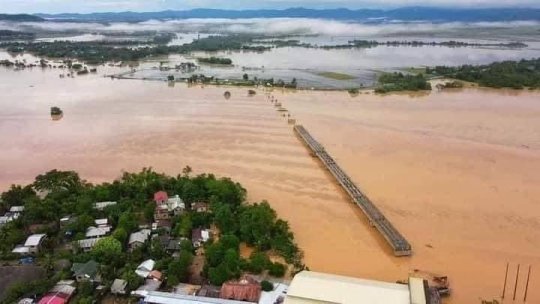
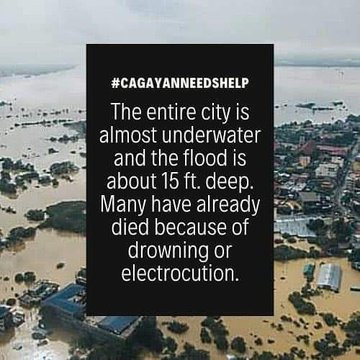
If you can donate, here's a link to different donation drives and relief ops for Cagayan.
https://www.linktr.ee/cagayanin
Please, Tumblr. Do your thing.
#ULYSSESPH#TYPHOON#FLOOD#CAGAYAN#ISABELLA#RESCUEPH#EMERGENCY#PHILIPPINES#BTS#KPOP#INCORRECT BTS#ONE DIRECTION#IM REALLY SORRY FOR INCLUDING THESE TAGS#WE JUST BADLY NEED YOUR ATTENTION AND HELP RIGHT NOW#JUNGKOOK#JIMIN#NAMJOON#JHOPE#YOONGI#SEOKJIN#NIALL HORAN#LIAM PAYNE#HARRY STYLES#ZAYN MALIK#LOUIS TOMLINSON#THAI BL#BTOB
854 notes
·
View notes
Text
Hello. Philippines has suffered through another storm, after going through the world's strongest typhoon just days ago, and left not only destroyed livelihood and properties but has also ended numerous lives. This happening in the middle of a fucking pandemic.
#CagayanNeedsHelp is currently trending in twt to help spread news to the national government, rescuers, and to those whose families are in the region that might be affected. Electric and communication lines are down and rescue is on going but slow. They have dispatched rescue teams across the region but it isn't enough. The flood has submerged an entire city about 15 meters deep. People have resorted to wait for help on their roofs. There are children, senior citizens, PWDs, and those who suffers from sickness, stuck for 3 days now with no food and water, hoping to be rescued.
People have retweeted and shared video clips, pictures, and even audio clips of people shouting for help in the dark. There are those who died drowning and getting electrocuted. Having no food and water is making it worse. Seeing these in the safety of my home makes me feel guilty of not being able to do anything. Hearing them cry for help and I could only do so much as help spread news and pray for them. We've raised donation drives for now but we still need to rescue a region.
I ask of you to help us spread awareness of what is currently happening in the Philippines.


Local hotlines we can spread to help reach rescuers:
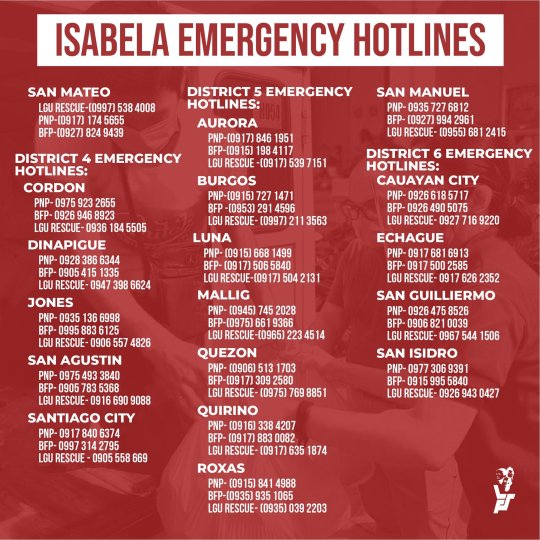

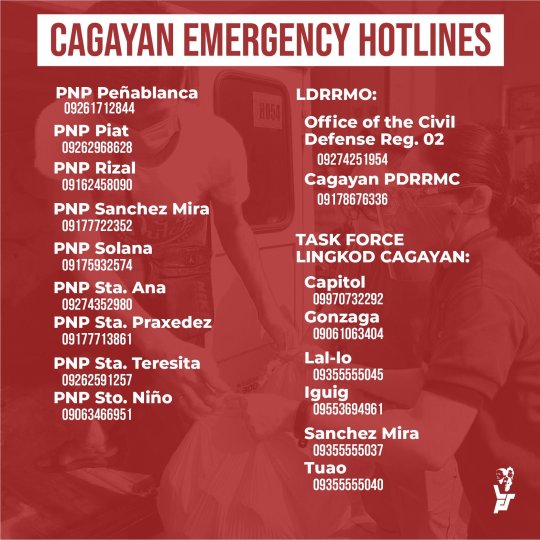

UPDATED
Donation drives:
📣The OVP has launced Kaya Natin PH donation drive for the affected cities by the typhoons.
Right now, this is the only donation drive from the govt I would trust.
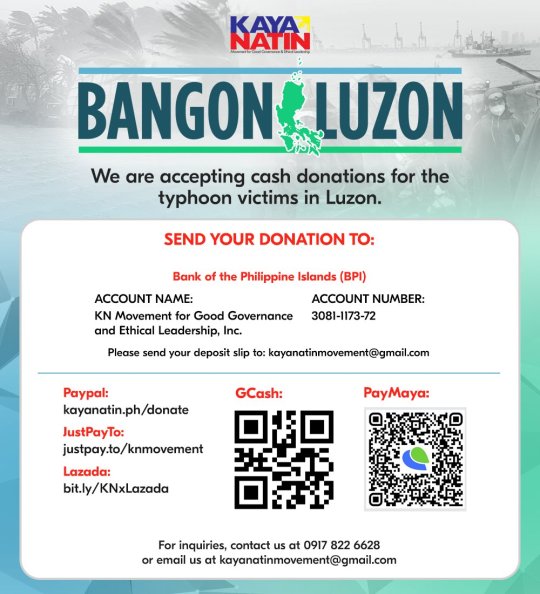
📣ABS CBN FOUNDATION

📣RED CROSS PHILIPPINES
📣PHILIPPINE ANIMAL WELFARE SOCIETY (PAWS)
📣University of Sto. Tomas has launched #TulongTomasino for in-kind donations.

📣University of the Philippines Los Banos #UPLBAgapay
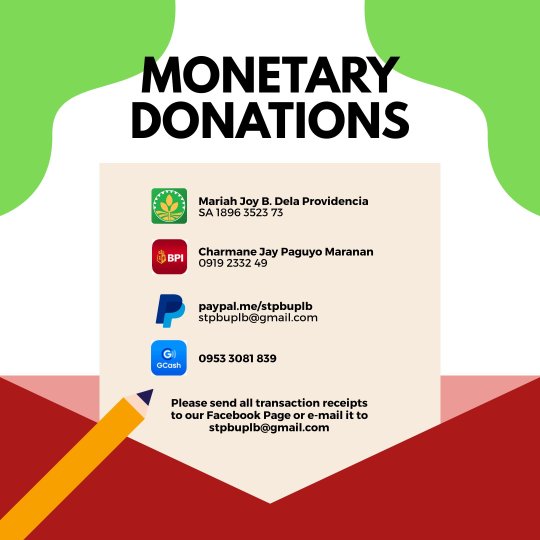
📣#FeedPHBabies
Donated relief goods are not so baby-friendly. Through this, we can give food, hygiene essentials, and vitamins appropriate for the babies.
📣For a more organized list of emergency hotlines and donation drives from NGOs and student organizations, here is the RescuePH carrd for your reference.
❗Let us also be vigilant with the recipients of our donations. I heard news of scammers trying to disguise as donation drives to be able to steal money. ❗
#CagayanNeedsHelp#philippines#UlyssesPH#PrayForPhilippines#IsabellaNeedsHelp#TugegaraoNeedsHelp#CatanduanesNeedsHelp#ill be updating this post from time to time#rescuePH
345 notes
·
View notes
Text
Filipinos have supported many movements such as the “Eat the rich” campagne, BLM movement, LGBTQA+ movement and many more. Now all we ask of you is to try and spread the word that we need help too. All we ask is you stop cooping up in your houses and donate or at least sign petitions and share the word that WE EXIST AND WE NEED HELP.
Here is a link that will educate you on what you can do
https://m.facebook.com/story.php?story_fbid=3487328691382111&id=100003150428888
245 notes
·
View notes
Photo

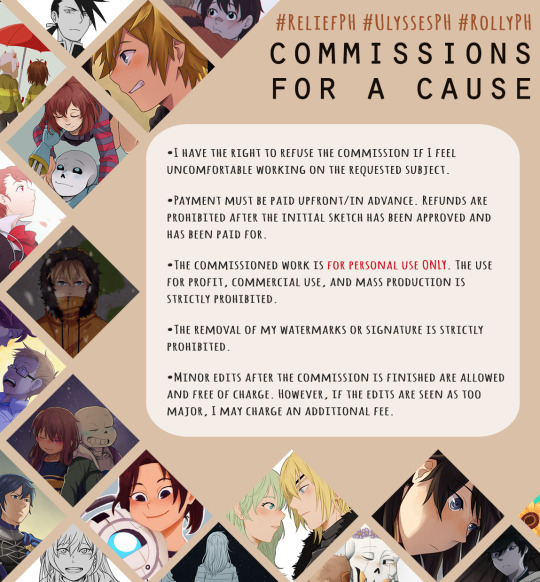
!!COMMISSION FOR A CAUSE!!
I’m opening up my commissions in order to help raise funds to help those who were affected by the recent typhoons that hit our country. All earnings will be donated to organization drives. I’m only taking 5 slots for now.
Reblogs are also much appreciated! If you’d rather opt out of the commission and donate directly, you can find more info here.
I’ll will be donating the profits through one of the donation drives organized by my Alma mater or one of the other drives listed in the link above. STATUS: 4 Slots left
#commissions#art commissions#commissions for a cause#reliefPH#ulyssesPH#rollyPH#rescuePH#signal boost
203 notes
·
View notes
Text
Send help.

Hello there.
I apologize if this post is not my regular content, but I would just like to have a few moments of your time.
You may have heard the news about typhoons making landfall across the Philippines - causing untold destruction that has lead to loss of livelihood, property, and life in recent times. As we speak, there are still plenty of people braving the floods and sleeping on the roofs of their homes, waiting to be rescued. These people, especially in the far-flung provinces such as Cagayan, were caught off-guard due to information blackout that was only exacerbated by the shutting down of a major broadcasting company. All of these are happening in the middle of a pandemic that we are still struggling to shake off.
For the time being, I am currently holding a donation drive. I will be selling prints of my artworks, starting with my most recent art book. All proceeds from sales will be donated to Kaya Natin! Movement, a non-profit organization currently making efforts in post-disaster relief in light of the recent catastrophic events. The donations will be used to fund relief efforts in order to help the victims of these typhoons.
The book is currently available on Blurb, which is recommended for those who are based internationally. But if you live in the Philippines or would like a signed copy, then the Limited Edition is for you. It is currently sold out, but you can pre-order for the next batch of printing.
Or if you would like to donate without ordering my book, you can do so by donating to Kaya Natin! Movement through the link below.
Thank you very much.
Order my book here: https://www.luciusfelimus.com/Book
Donate here: https://www.kayanatin.ph/donate/
Photo by Larry M. Piojo, ABS-CBN News
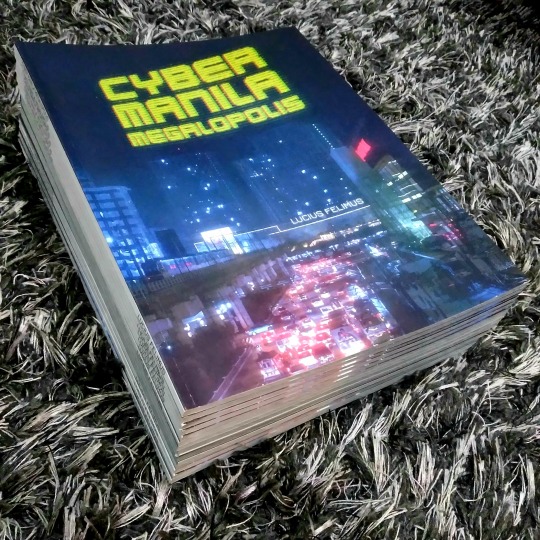
171 notes
·
View notes
Text
a compilation of donation drives for abandoned/displaced pets due to what is happening in the Philippines: HERE
Also if you are unable to donate cash here is a twitter thread I found with a bunch of monetised videos you can watch or even just have on in the background, a very easy way to help! (don’t skip ads) HERE
#i’ve added stuff related to pets cause the carrd i reblogged earlier didn’t seem to have anything relating to that#but please donate/signal boost both things#seems hardly anyone is giving attention to what is happening#rescueph#Philippines
96 notes
·
View notes
Text
❗️❗️𝘼𝙏𝙏𝙀𝙉𝙏𝙄𝙊𝙉 𝙋𝙇𝙀𝘼𝙎𝙀 ❗️❗️
🄴🅈🄴🅂 🄳🄾🅆🄽 🄷🄴🅁🄴 🄰🄽🄳 🅁🄴🄰🄳 🄿🄻🄴🄰🅂🄴.
HEY EVERYONE! This is not writing-related, however, the fellow countrymen of my friend are suffering greater pains even in the midst of the pandemic and because it is perplexing enough that the government is not granting their suffering people the ability to survive the night, they need all of the help they can garner to SPREAD THE WORD and RECEIVE ASSISTANCE, whether it’s through food, clothing, funds for their rescuers, or monetary help to organizations who intend to donate, AND most importantly, to let this issue be known throughout the world to be a catalyst of change. IT IS SIMPLE. REFER TO THIS SITE TO KNOW HOW YOU CAN HELP. Change the future for many and prolong it for more than just one night that many are struggling to make it through right now.
PLEASE SPREAD THE WORD BY REBLOGGING
https://helptheph.carrd.co/
This contains updates, database, hotlines, and donation drives regarding #UlysessPH and #RollyPH. #RescuePH #CagayanNeedsHelp
❗️❗️❗️𝙐𝙎𝙀 𝙔𝙊𝙐𝙍 𝙋𝙇𝘼𝙏𝙁𝙊𝙍𝙈 ❗️❗️❗️
84 notes
·
View notes
Text
I can't help but to think about how devastated my fellow Filipinos as of the moment--especially those who are severely affected by the typhoon ulysses. I can't do anything but to pray for them. For the family, for the souls that are taken away and for the whole place itself. I can't stand this events and circumstances happening to us now, but amidst all of this, hope we may find strength, peace, and hope. To our foreign friends out there, we ask and seek for your help and prayers.
'Better days are coming mga kababayan.'
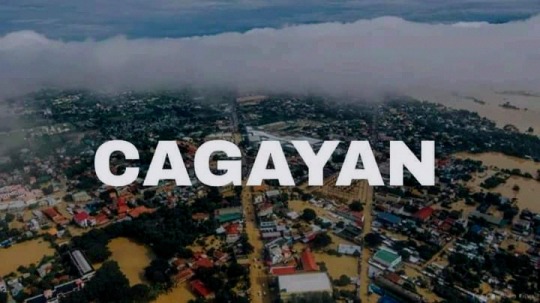
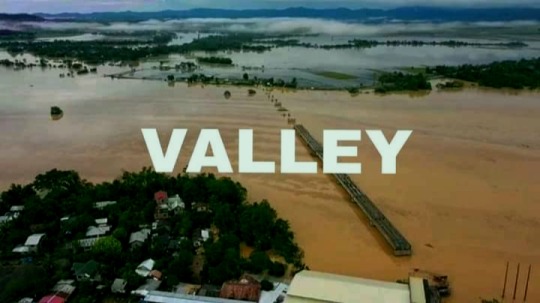
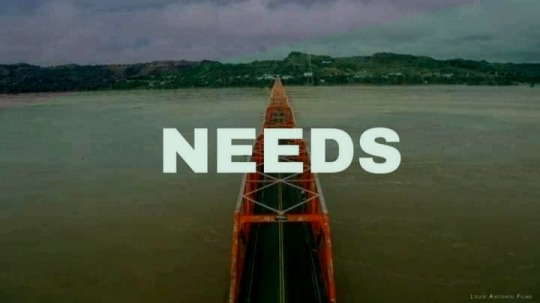
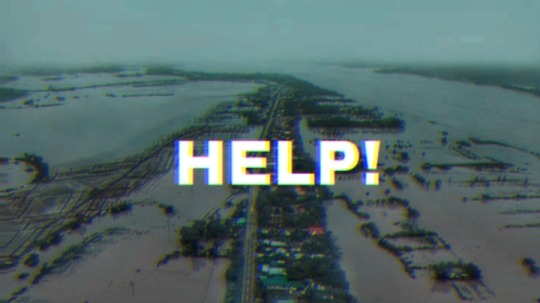
85 notes
·
View notes
Link
i didn’t make this carrd, but i want to help spread awareness about it. i know everyone’s having a hard time right now, but i didn’t want this to go unnoticed. the filipino people can’t do this alone, and any outside help we can get is appreciated.
the following is copy-pasted from the carrd:
#RescuePH
Help the Filipinos who were affected of the Typhoon Rolly & Ulysess
Live updates on Twitter // #RescuePH
Offering Help and Donation on FACEBOOK
As of 11/14/2020 PHT: Cagayan, Isabela, and Tuguegarao are in need of urgent rescue operations. Please donate if you can to provide the victims the necessities that they need while they are being rescued. #UlyssesPH #RollyPh
#CagayanNeedsHelp
Hotlines
How to Help (Donations & Petitions)
What's Happening
#UlyssesPH Database
What is happening in the Philippines The largest island of the Philippines, Luzon, was struck by Typhoon Rolly (Goni) in November 1. It made landfall and affected many Filipinos residing in Bicol region (southern region). In November 11, just after the devastating typhoon Rolly, Metro Manila and other nothern region of Luzon are currently affected by Typhoon Ulysses (Vamco) destroying houses, businesses, and agriculture.
here is a twitter thread specifically about various local donation drives you can look into:
https://twitter.com/DDrivesPH/status/1326742247224668161
and here is a twitter thread for scammers you should avoid:
https://twitter.com/gyustachee/status/1327456935667331072
please reblog if you cannot donate. it goes a long way.
edits: please check my reblogs for more updates as well as more links on how to donate and help!! there’s even links to a YT playlist you can stream where the ad revenue will go towards the affected + a twt thread of filipino artists doing donation comms among other things. i’ll keep reblogging if i have more info to share!! tysm
56 notes
·
View notes
Text
TW // DEATH, DROWNING
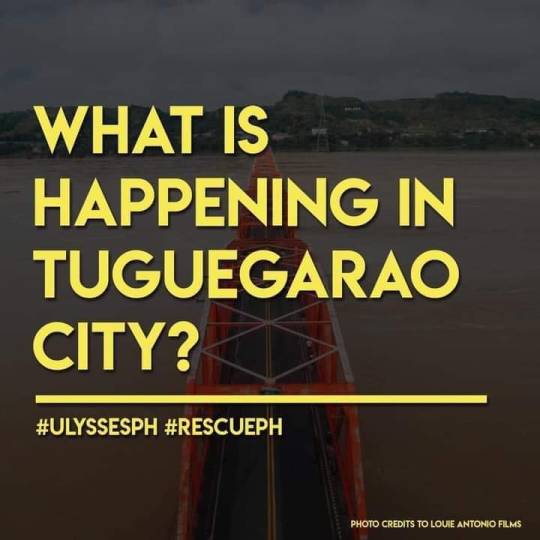
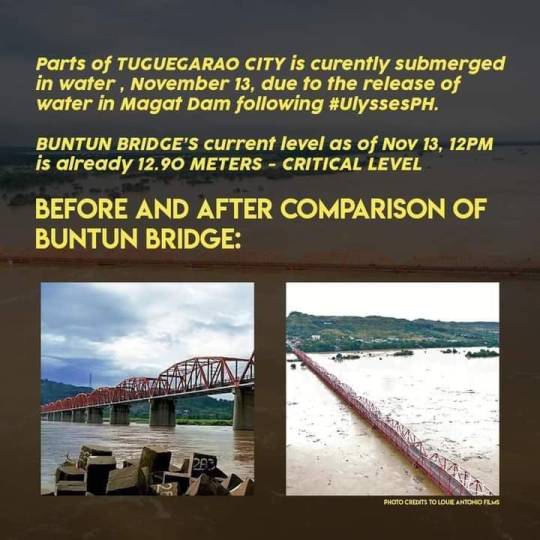
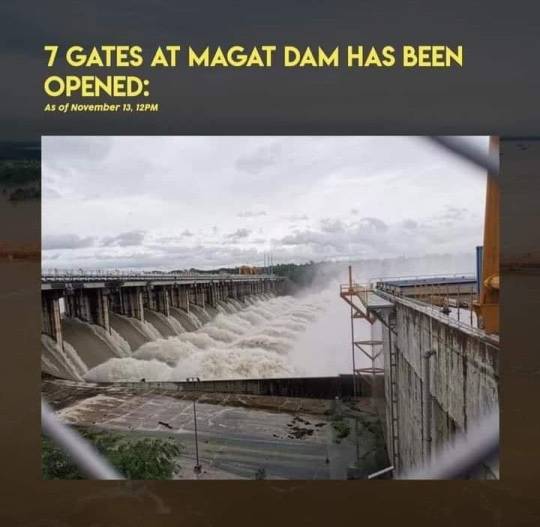
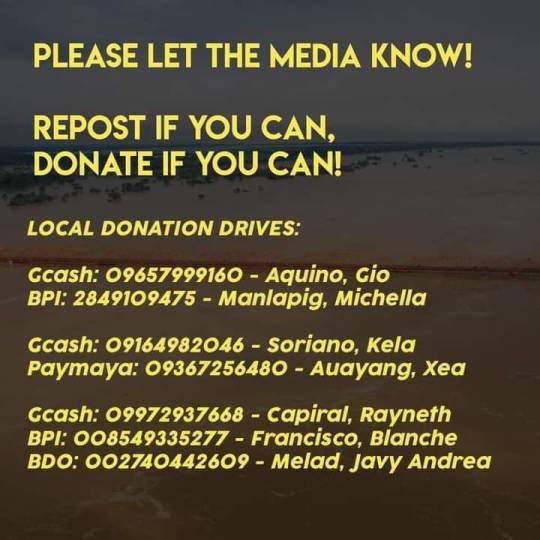
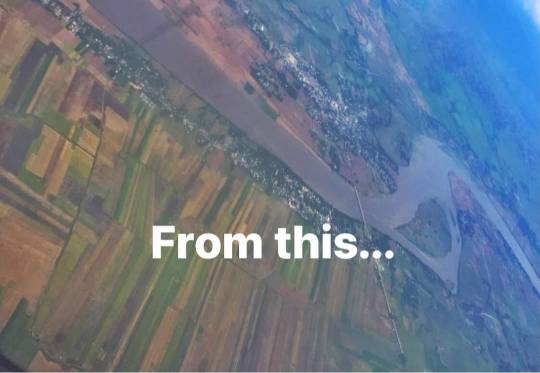
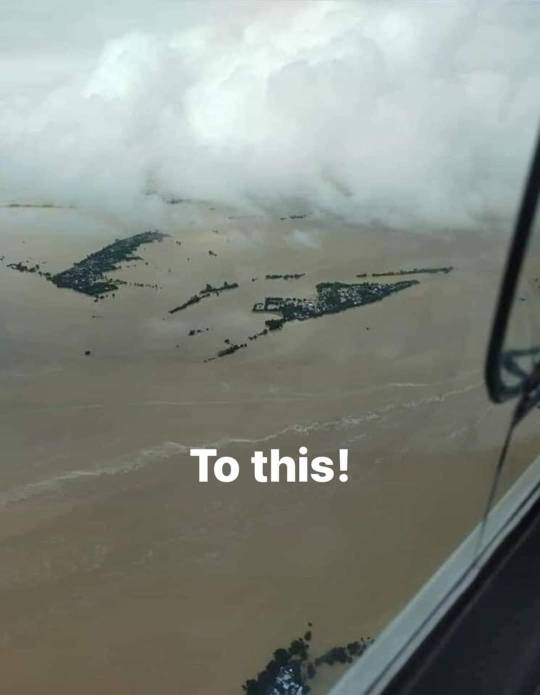
The Philippines suffers because of the wrath of Typhoon Ulysses.
Corpses are floating, rescuers cannot pass. People are SCARED AND DEMANDS THE ACTIONS OF THE GOVERNMENT.
VICE PRESIDENT LENI ROBREDO HAS BEEN DOING ACTIONS NON-STOP AND PRESIDENT RODRIGO DUTERTE ANNOUNCES HE CANNOT SWIM IN THE FLOOD TO “HELP” THE PEOPLE IN NEED.
The vice president didn't need to swim in order to help the people. SHE MOVED. SHE MADE A PLAN AND EXECUTED IT.
WE NEED BETTER DISASTER MANAGEMENT.
If this doesn't make you want to #OustDuterte, I don't know what will. He's letting his people die!
62 notes
·
View notes
Photo
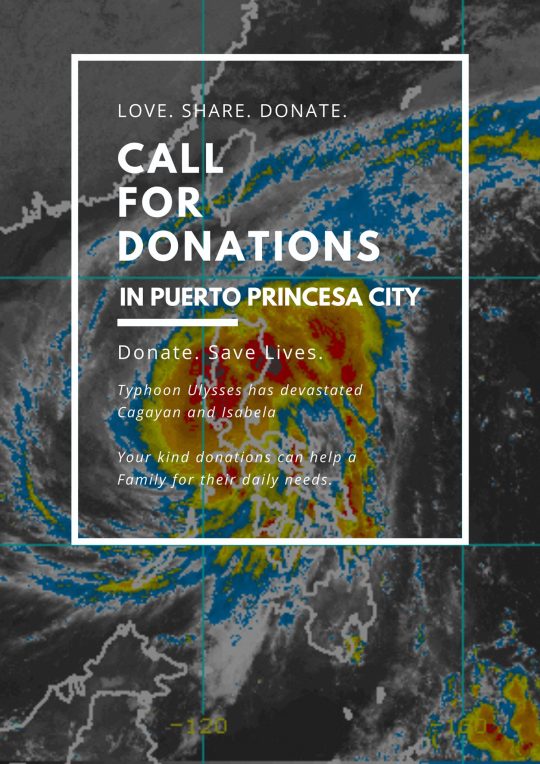
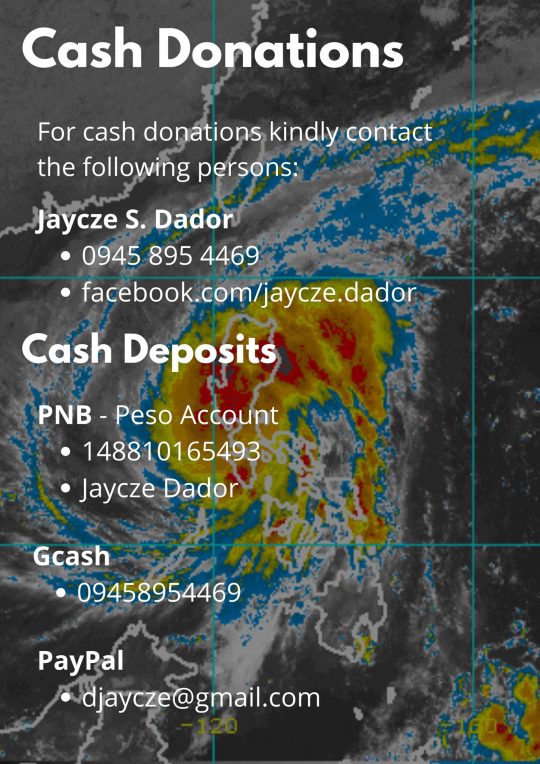
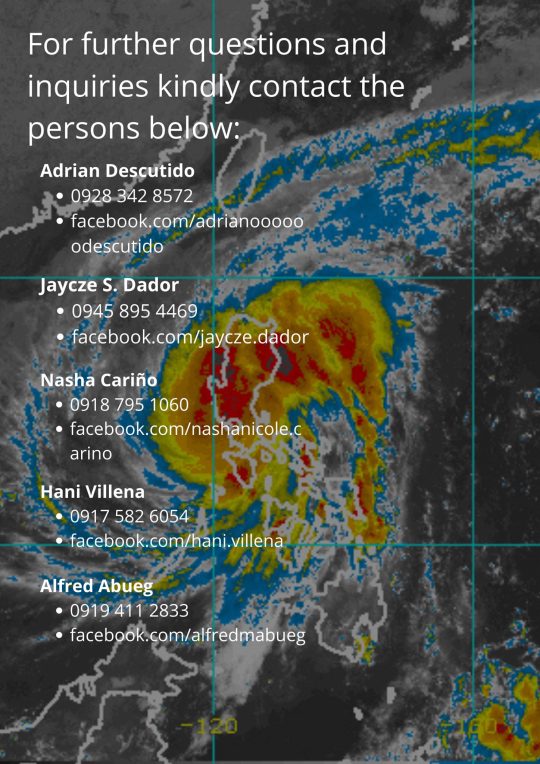
BANGON, LAMBAK!
Youth Advocates for the Philippines Region IV-B is conducting a donation drive for residents in Cagayan Valley and Aurora who have been severely devastated by Typhoon Ulysses.
Last November 13 after the onslaught of Typhoon Ulysses, seven gates of Magat Dam were opened, causing severe floods to surrounding areas in Cagayan Valley. The entire Cagayan Valley region is now under State of Calamity as the level of damage to infrastructure and displacement of residents are on a record high. Rest assured that your monetary donations will proceed to the target beneficiaries as we have coordinated with Youth Advocates for the Philippines - Cagayan Valley. Youth Advocates for the Philippines is a youth-led, non-profit, and volunteer organization that has been accredited by the National Youth Commission, the United Nations Major Group of Children and Youth, and UNMGCY-UNEP.
Please reblog this, everyone! THE BAYANIHAN SPIRIT REMAINS NOW MORE THAN EVER.
#RescuePH#CagayanNeedsHelp#Donation#Filipino#Pinoy#BangonLambak#BangonPilipinas#Philippines#typhoon ulysses#TyphoonUlysses
66 notes
·
View notes
Text
the philippines needs your help.
[NOT HP RELATED]
as some of you may already know, i am from the philippines.
being a tropical country that’s right next to the pacific ocean, typhoons are always bound to hit my homeland.
however, last november 1, typhoon rolly (goni) which is a super typhoon, has devastated the southern part of the biggest island of my country, luzon. (mainly the province of bicol)
and last november 11, typhoon ulysses (vamco) has struck the northern part of the island.
now, magat dam (near cagayan) had been releasing water due to risk of it overflowing, with this, the provinces of cagayan and isabela are submerged and some barrios (like linao and tugegarao in cagayan) are no longer visible because of the flood.
my countrymen need as much help as they can, if you can’t donate, just please reblog. it’ll help so much, i swear. attached below are pictures of information and the current state of the province of cagayan.
click this link right here and here to be redirected to carrds that has petitions and ways on how to donate.
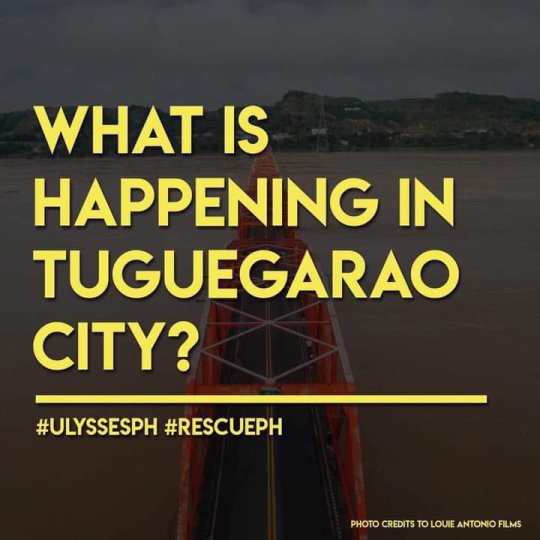
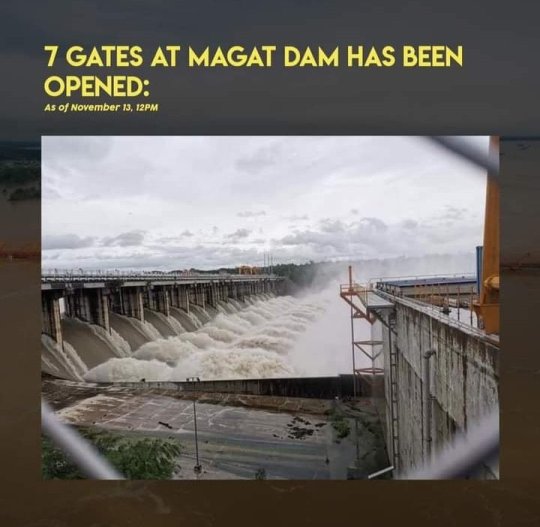
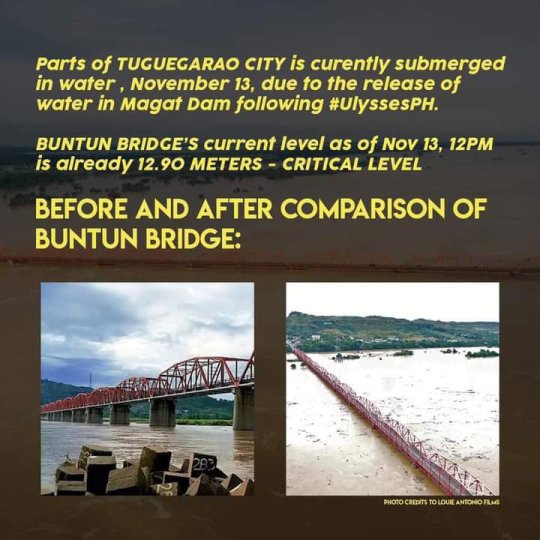
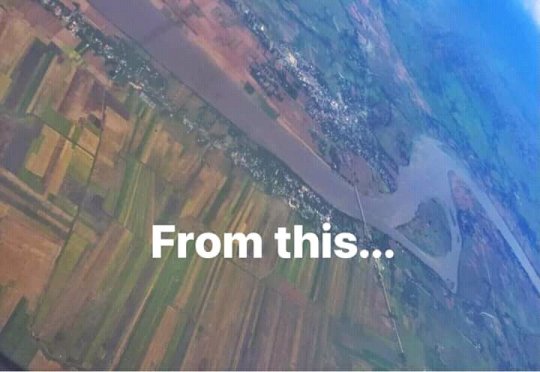

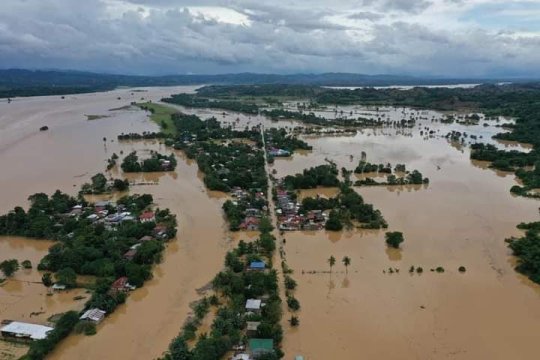
49 notes
·
View notes
Text
If may reports po kayo for rescue, please don’t hesitate to send me a message. I’ll report it agad to the head of our Red Cross chapter para mareach out nya agad to Philippine Red Cross. You can also contact them directly.
Ito lang muna yung magagawa natin to help other people na nasalantahan ng bagyo. It’s not much, but it counts. Thank you and stay safe!
𝐓𝐘𝐏𝐇𝐎𝐎𝐍 𝐄𝐌𝐄𝐑𝐆𝐄𝐍𝐂𝐘 𝐇𝐎𝐓𝐋𝐈𝐍𝐄
𝗡𝗔𝗧𝗜𝗢𝗡𝗔𝗟 𝗘𝗠𝗘𝗥𝗚𝗘𝗡𝗖𝗬 𝗛𝗢𝗧𝗟𝗜𝗡𝗘 - 911
𝗣𝗛𝗜𝗟𝗜𝗣𝗣𝗜𝗡𝗘 𝗥𝗘𝗗 𝗖𝗥𝗢𝗦𝗦
Hotline: 143, (02) 527-0000, (02) 527-8385 to 95Disaster Management Office: 143(Staff), 132(Manager),133(Radio Room)
𝗡𝗔𝗧𝗜𝗢𝗡𝗔𝗟 𝗗𝗜𝗦𝗔𝗦𝗧𝗘𝗥 𝗥𝗜𝗦𝗞 𝗥𝗘𝗗𝗨𝗖𝗧𝗜𝗢𝗡 𝗔𝗡𝗗 𝗠𝗔𝗡��𝗚𝗘𝗠𝗘𝗡𝗧 𝗖𝗢𝗨𝗡𝗖𝗜𝗟 (𝗡𝗗𝗥𝗥𝗠𝗖)
Trunkline: 911-5061 to 65Phone Number: (+632) 91114016, (+632) 9122665
𝗣𝗔𝗚-𝗔𝗦𝗔
Hotline: (02) 824-0800
𝗗𝗘𝗣𝗔𝗥𝗧𝗠𝗘𝗡𝗧 𝗢𝗙 𝗦𝗢𝗖𝗜𝗔𝗟 𝗪𝗘𝗟𝗙𝗔𝗥𝗘 𝗔𝗡𝗗 𝗗𝗘𝗩𝗘𝗟𝗢𝗣𝗠𝗘𝗡𝗧
Text Hotline: 0918-912-2813Trunkline: (02) 931-81-01Disaster Response Unit: 856-3665, 852-8081
𝗣𝗛𝗜𝗟𝗜𝗣𝗣𝗜𝗡𝗘 𝗡𝗔𝗧𝗜𝗢𝗡𝗔𝗟 𝗣𝗢𝗟𝗜𝗖𝗘 𝗛𝗢𝗧𝗟𝗜𝗡𝗘 𝗣𝗔𝗧𝗥𝗢𝗟
Hotline: 117, 722-0650Text Hotline: 0917-847-5757
𝗕𝗨𝗥𝗘𝗔𝗨 𝗢𝗙 𝗙𝗜𝗥𝗘 𝗣𝗥𝗢𝗧𝗘𝗧𝗜𝗢𝗡 (𝗡𝗖𝗥)
Direct Hotline: (02) 426-0219, (02)426-3812, (02) 426-0246
𝗣𝗛𝗜𝗟𝗜𝗣𝗣𝗜𝗡𝗘 𝗖𝗢𝗔𝗦𝗧 𝗚𝗨𝗔𝗥𝗗
Trunkline: (02) 527-8481 to 89Action Center: (02) 527-38770917-PCG-DOTC 0917-724-3682(Globe)0918-967-4697
𝗠𝗘𝗧𝗥𝗢 𝗠𝗔𝗡𝗜𝗟𝗔 𝗗𝗘𝗩𝗘𝗟𝗢𝗣𝗠𝗘𝗡𝗧 𝗔𝗨𝗧𝗛𝗢𝗥𝗜𝗧𝗬
Hotline:136Trunkline: (02) 882-4150-77loc. 337 (Rescue)255 (Metrobase)319 (Road Safety)374 (Public Safety)320 (Road Emergency)(02) 882-0925 (Flood Control)
𝗗𝗘𝗣𝗔𝗥𝗧𝗠𝗘𝗡𝗧 𝗢𝗙 𝗖𝗢𝗠𝗠𝗨𝗡𝗜𝗖𝗔𝗧𝗜𝗢𝗡
(DOTC) Central HotlinePublic Assiatnce Center: 7890
𝗠𝗔𝗡𝗜𝗟𝗔 𝗜𝗡𝗧𝗘𝗥𝗡𝗔𝗧𝗜𝗢𝗡𝗔𝗟 𝗔𝗜𝗥𝗣𝗢𝗥𝗧 𝗔𝗨𝗧𝗛𝗢𝗥𝗜𝗧𝗬Text Hotline: 0917-839-6462 (TEXTNAIA)
Terminals 1,2,and 4: 877-1109 and loc. 2444Terminal 3: 887-7888 loc. 8046
𝗠𝗔𝗡𝗜𝗟𝗔 𝗪𝗔𝗧𝗘𝗥
Hotline: 1627
49 notes
·
View notes